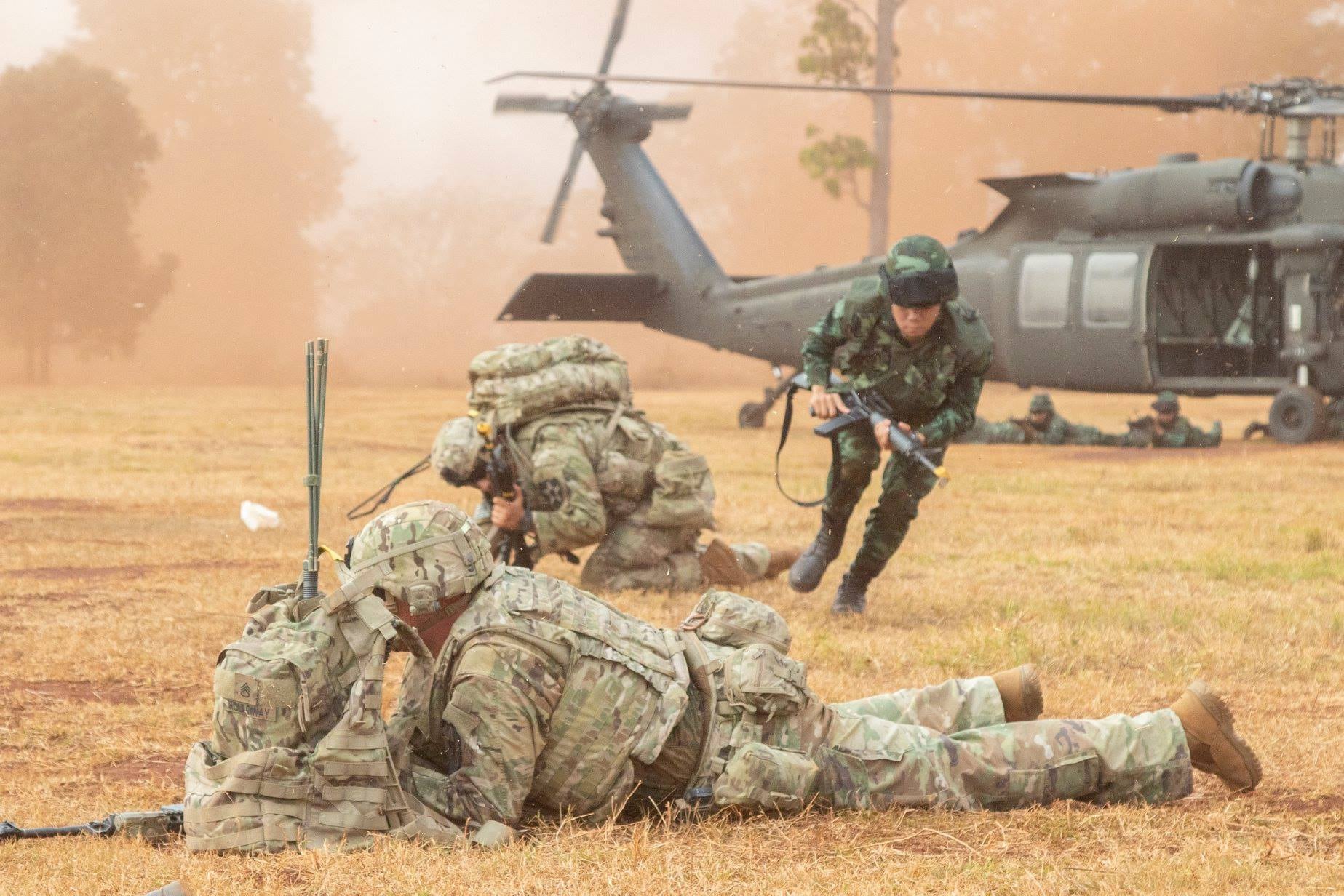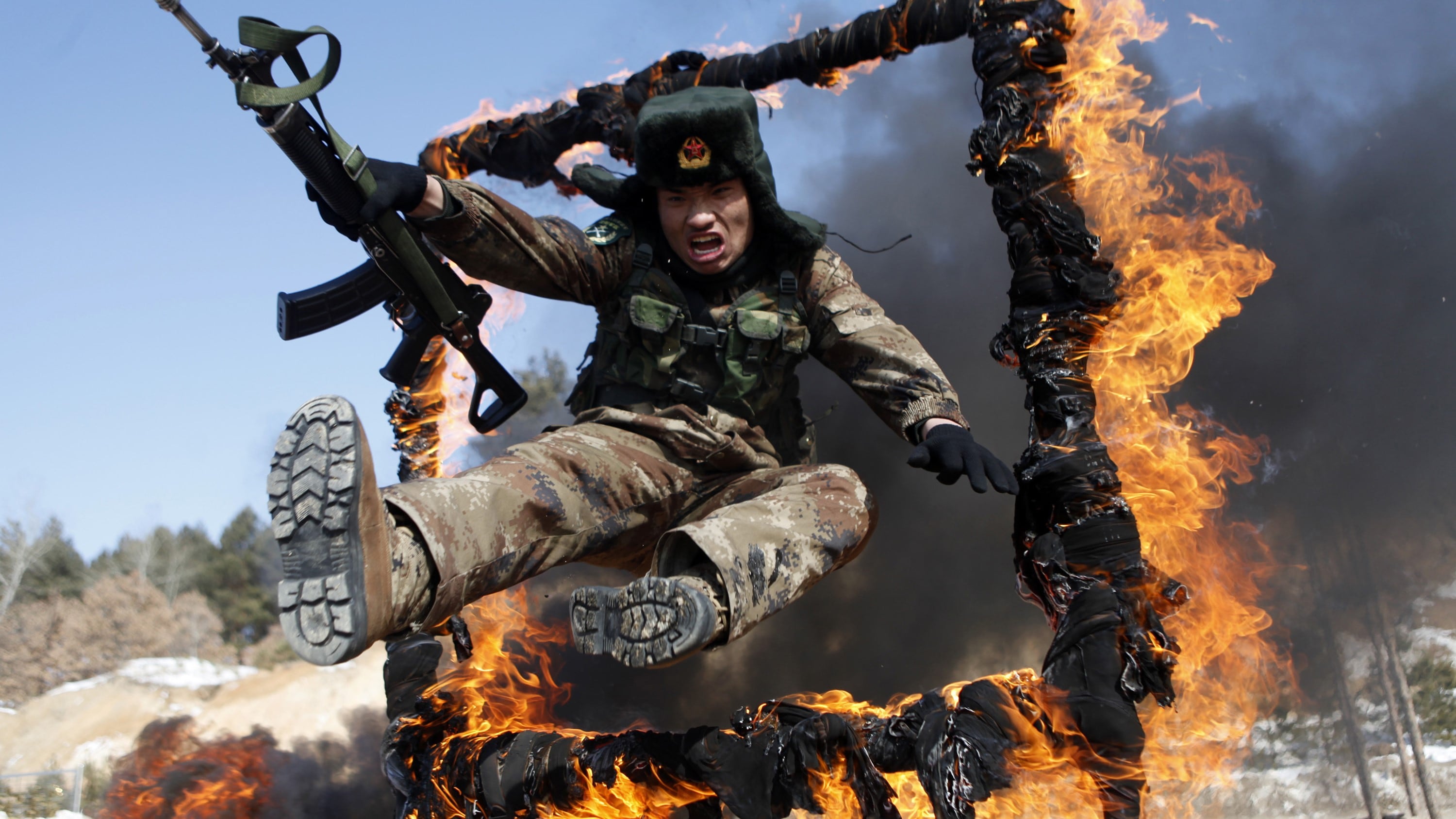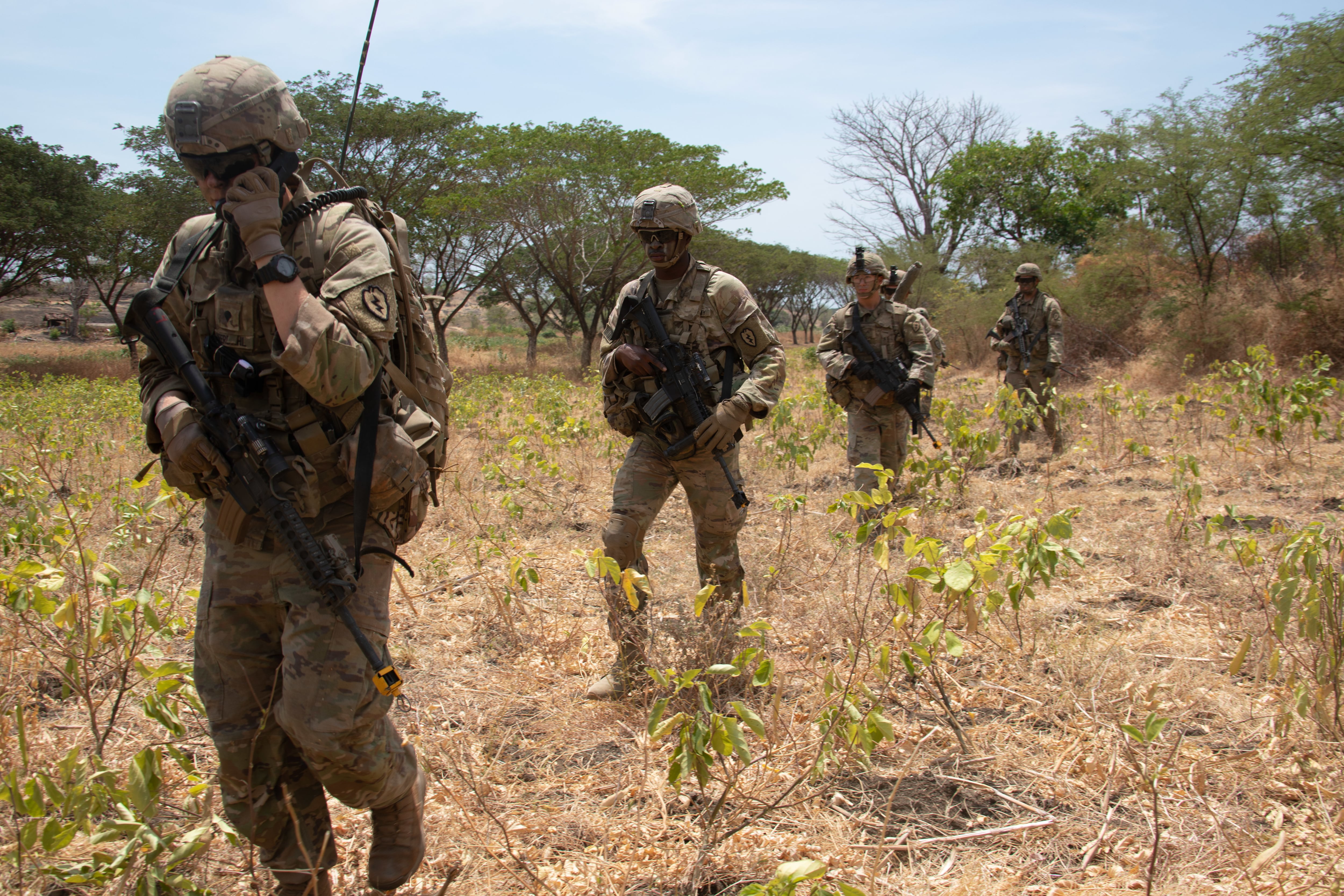The Army secretary and chief of staff are looking to bring troops to the Indo-Pacific region for two to three months longer than past rotations — on top of aligning a security force assistance brigade specifically to the theater.
The push comes as the ground service lobbies for its future role in an area dominated by water, a role that would include missile defense and courting potential allies.
“We’re looking very hard at our disposition and the duration of forces west of the International Date Line,” said Secretary of the Army Ryan McCarthy during a discussion at the Center for New American Security think tank on Wednesday.
“About a year ago, Strykers from [Joint Base Lewis-McChord] were there for about three months,” McCarthy added during a press gaggle after the event. “We’re looking to get them about five to six months — a longer duration, more repetitions with their counterparts."
The brigade McCarthy referenced came from the 7th Infantry Division. During their rotation, Stryker troops helped prepare the Philippine Army’s 1st Brigade Combat Team for its inaugural combat deployment to the southern Filipino province of Sulu to counter ISIS-aligned Abu Sayyaf militants, returning soldiers told Army Times this summer.
The rotation was part of the Army’s Pacific Pathways program, which has been sending three unit rotations to the region each year for the past five years to partner with countries like Indonesia, Thailand and Malaysia. The Army has been talking about extending those rotations for more than a year, but appears eager to finally pull the trigger.
RELATED

“We’ve been doing these training exercises with our partners in the region, which are great for relationships,” Army Chief of Staff Gen. James McConville said during the press gaggle. “As the secretary said, many want longer durations to build stronger relationships, so we’re working through that.”
On top of extended Pathways rotations, the Army is also gearing up to send the 5th Security Force Assistance Brigade, which is based out of Joint Base Lewis-McChord, Washington, to Asia in the coming year.
“[The SFAB] is being stood up now and we’ll take a look at how soon they’re ready to go,” McCvonville said. “This summer and the fall is when we’ll start seeing those deployments.”
Building partnerships is a cornerstone of U.S. strategy in the region. Those relationships could be critical in convincing local nations to house future long-range fires emplacements needed to guard the sea lanes patrolled by U.S. warships and the airspace flown by U.S. aircraft.
RELATED

“We haven’t had specific conversations about what capabilities, per say, would be housed in country x or y,” McCarthy added.
But the service secretary has before mentioned that long-range precision fires being developed through the Army’s modernization portfolio could “change the geometry within Southeast Asia.”
“If we can get the appropriate partnerships, expeditionary basing rights with partners within the region, we can change the geometry and basically reverse anti-access, area-denial capabilities that have been invested by near-peer competitors,” McCarthy told the Senate in September.
The strategy to woo allies includes larger exercises, visiting additional countries with more consistency and, of course, more foreign military sales.
Thailand, for instance, bought 60 Stryker vehicles last year and wants to buy another 100 now, McCarthy said.
“The trends are all going in the right direction, so a lot is going to happen in the next couple of years,” he added. “Over 70 percent of the [defense chiefs] in the countries in Asia are Army chiefs, again, highlighting just how important the Army is in that part of the world."
Kyle Rempfer was an editor and reporter who has covered combat operations, criminal cases, foreign military assistance and training accidents. Before entering journalism, Kyle served in U.S. Air Force Special Tactics and deployed in 2014 to Paktika Province, Afghanistan, and Baghdad, Iraq.




